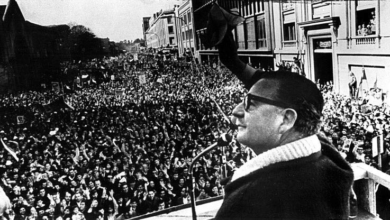A wave of assassinations has hit Colombia in recent weeks, targeting progressive activists. This violence appears to be highly coordinated by far right-wing forces, and aimed at preventing the conclusion of a historic peace agreement in the country.
In 2010 Colombia had its presidential elections. Juan Manuel Santos, the favorite candidate of the conservative forces, won and was strongly supported by the departing president, Álvaro Uribe. During his presidency in 2008, Uribe launched an aggressive campaign of assassinations targeting the rebel guerrilla group the Fuerzas Armadas Revolucionarias de Colombia (Revolutionary Armed Forces of Colombia or FARC).
Uribe went to the extent of attacking FARC in foreign land, in a forest territory in Santa Rosa de Yanamuaru, Ecuador, violating Ecuadorian sovereignty and causing diplomatic tensions between both nations. In Operación Fénix, as it was called, 22 FARC members, and more than 20 individuals present in the area, including Ecuadorian and Mexican citizens, were killed as well as Raúl Reyes, the second-in-command of the FARC.
Things did not turn out as Álvaro Uribe would have liked them. Juan Manuel Santos started to ease up diplomatic relationships with other Latin American governments, which had been jeopardized by Uribe’s ultra-conservative politics backed by the imperialist government, whether Republican or Democratic, of the United States.
Under Uribe’s administration, Colombia was the United States’ strongest ally in Latin America against the wave of pro-socialist governments winning elections in Latin American countries since Hugo Chávez was elected the president of Venezuela in 1998.
Peace process in jeopardy
With Santos’ election, the new government began not only a diplomatic dialogue with progressive governments of Latin America, but he started a negotiations for a peace treaty and disarmament of the FARC. The implementation of a negotiated solution was supposed to be monitored by the UN Security Council. Santos was even nominated for the Peace Nobel Prize. The goal was to reach a final peace agreement by March 23, 2016.
These peace negotiations have not been that peaceful though, especially when it comes to left wings activist and politicians. The dialogue between the FARC and the government has been marred by a wave of assassinations of activists of the left, including environmental activists.
Only in 2013, 29 members of the Marcha Patriótica, a left wing organization founded in 2012, were assassinated. According to Somos Defensores, a Colombian organization that records threats and killings of rights defenders, up to 2015 63 assassinations have taken place. Most of the killings are in the departments (states) of Antioquia and Cauca and the largest group of victims are environmental activists with 12 killed.
Some of the recent assassinations include William Castillo from the Marcha Patriótica and Klaus Zapata, a community leader and member of the Juventud Comunista (JUCO), a Marxist-Leninist organization, Marisela Tombe, a peasant leader, and Alexander Oime, an Indigenous reserve governor. These killings took place, disturbingly, in a period of just three weeks.
These assassinations are believed to have been perpetrated by the neo-paramilitary group Los Urabeños, also known as Autodefensas Gaitanistas de Colombia, which was formed by ex-members of the dismantled Autodefensas Unidas de Colombia (AUC), also known as paras o paracos. This group made a deal with the Uribe government for “disarmament” even though it had always been clear that the AUC served as the armed wing of the ultraconservative government to eliminate the left wing guerrillas and movements, especially the FARC.
Juan Manuel Santos’ government has not been able to protect and guarantee the protection of those with whom he has tried to dialogue and make peace. However, the masses of people, as well as the FARC, are determined to push on with the peace process and pursue new avenues in the struggle for justice and liberation in Colombia.






